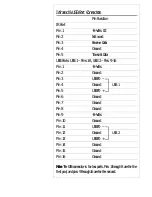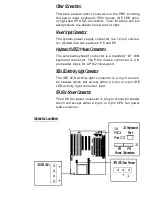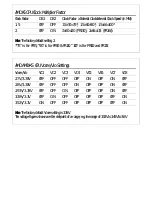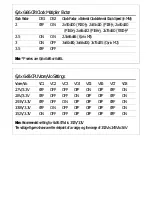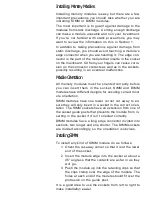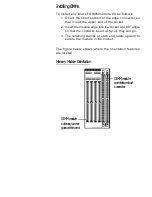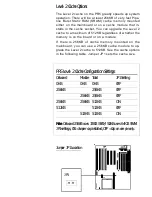
In Pentium-based designs there is more than one
clock speed. The mainboard components run at one
speed and the CPU will run at the same speed in
its external activity, but will run at some multiple
of that speed internally.
External Clock
The External Clock, also sometimes referred to as
the external CPU clock or bus clock, is the CPU’ s
input clock. The CPU will interface with other com-
ponents at this speed and its internal clock speed is
a multiple of this external speed. The internal speed
is set by the Clock Multiplier Factor. For example,
the Intel Pentium P90, P120 and P150 CPUs all have
the same external clock, 60MHz, but have differ-
ent clock factors.
Internal Clock
The Internal Clock is a multiple of the external clock
and is the speed used to list the processor’ s operat-
ing speed. The internal speed is set by the Clock
Multiplier Factor. For example, the Intel Pentium
P150 CPU has a 150MHz internal clock speed, a
2.5 multiple of the 60MHz external clock.
Clock Multiplier Factor
The clock multiplier factor is the factor by which
the external clock is multiplied to set the CPU’ s
internal clock speed. The PR5 has four options: 1.5,
2, 2.5, 3. For example, the Pentium P166 requires a
66MHz external clock and a 2.5 clock multiplier
factor to establish its 166MHz internal clock speed.
Note: The full clock frequencies are rounded off
for convenience when listed, so while 66 x 2.5 =
165, the actual clock speed is 166MHz.
ISA Bus Clock
This is the clock speed of the ISA expansion bus
and may also be referred to as the ISA speed, AT
Bus Clock or AT clock. The original specification
was 8MHz. The slower speed ensures compatibil-
ity with all ISA expansion cards. Newer ISA ex-
pansion cards may be able to operate at faster
speeds, which provide increased performance. The
PR5 can be set for slower or faster ISA Bus clock
speeds. The slower speed ensures maximum com-
p atibility.
Summary of Contents for PR5
Page 10: ...System Block Diagram ...









